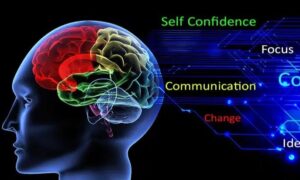To catch up with the fast-paced business world, you must know the grand scheme of effective employee coaching to achieve greater results.
Employee coaching generally involves leaders providing guidance and support with a regular feedback system to help employees improve their work performance and attain their optimal potential.
Depending upon the level of the employee, the way of team coaching can vary. There are four levels of employee based on their performance.
- Novice: Has little knowledge and needs full guidance and instruction alongside constructive correction.
- Intermediate: They better understand their role and may have developed some skills but need more improvements in specific areas.
- Doer: Have a strong understanding and can accomplish their responsibilities efficiently and effectively.
- Expert: Deep understanding of their role and the whole work dynamics of the organization
Steps to Skills-Based Coaching for Improved Performance
After getting a clear picture of an employee’s strengths, areas for improvement, and career goals, only proceed with strategically tailored team coaching.
1. Listen to Understand
Listening to employees prior to coaching them is a critical step, and you must not avoid it. You can understand the employee’s perspective and needs and identify potential roadblocks. It can help you foster a culture of open communication and establish a positive, supportive relationship.
By doing so, you can design much more effective team coaching programs and support team members’ growth. Thus, listen to your employees to ensure a more successful coaching outcome.
2. Define the Goals
Establish the goals of the organization and the employee’s role in achieving these goals. This can involve strengthening a particular skill set, expanding sales, or enhancing customer pleasure. Once the targets have been established, it’s critical to make them evident to the employee.
While setting goals, you must be clear, concise, and consistent so that employees understand what is expected of them. A clear goal can become a motivating factor as they know what they need to achieve. Likewise, it helps you measure and track the progress and pinpoint the employee’s performance.
It will give you insights into how effective and impactful coaching is and whether you need to make any adjustments to the coaching plan.
3: Assess the Current Situation
It is a crucial step where you need to understand the employee’s needs, so you can devise a coaching plan to address and take account of such factors. Furthermore, by assessing the current situations, you can address the root causes of any performance issues and address them directly.
Similarly, it will give you a clear vision of individual employees’ roles in the organization and how their work aligns with the organization’s overall objectives.
Thus, take time and assess the current situation before the team coaching to devise a plan of action for strategically effective employee coaching.
4: Develop a Plan of Action
A well-designed plan of action helps to ensure that the coaching process is effective, efficient, and tailored to address the employee’s specific needs. Based on the analysis from previous steps, carefully curate a strategy that outlines the steps that will be implemented to support the employee’s development and improve their capabilities.
Ensure the strategy focuses on the employee’s needs, builds on their strengths, and addresses their weaknesses. In addition, allocate the necessary resources, including time and funding, to support the employee’s development. You should also establish a timeline to keep track of the coaching process, like milestones and deadlines for specific goals.
5: Provide Feedback and Support
Feedback is a key tool in coaching employees to boost their performance. It provides employees with an understanding of their strengths and weaknesses, helping them to determine areas they need to work on and set goals for future performances.
For effective team coaching, aim to provide feedback promptly and ensure feedbacks are specific, objective, and actionable. However, you should also provide the necessary support to help employees to develop new skills and knowledge. You can provide them with training and development opportunities to gain skills and knowledge.
6: Set Achievable Expectations
Expectations provide direction, motivation, and a sense of purpose for employees and play a significant role in determining the success of the coaching process. Setting achievable expectations helps employees to stay motivated and focused. Moreover, it reduces the risk of frustration and disappointment in employees.
Furthermore, setting achievable expectations also promotes continuous improvement and learning.
Finally, it is important to review and adjust expectations as necessary regularly. As employees grow and develop, their skills, knowledge, and abilities may change, and their expectations may need to be adjusted accordingly.
7: Celebrate Successes
Celebrating success helps to reinforce positive behaviors and reinforces the importance of continuous improvement and hard work. One of the main benefits of celebrating success is that it provides motivation and a sense of accomplishment for employees.
When employees are recognized for their hard work and achievements, they are more likely to feel valued and appreciated by their employers. Furthermore, celebrating success can also help to build positive relationships between employees and their coaches.
Employees who see their coaches seeking out and celebrating their successes are more likely to feel valued and appreciated.
Wrapping Up
Start by setting clear expectations, providing feedback on performance, and giving your employees recognition for their successes. Encourage open communication so employees feel comfortable sharing their ideas and expressing their concerns. Provide them with opportunities for growth, such as training and development programs, and support them in their efforts with regular check-ins and progress reports.
Finally, be open to providing constructive criticism when needed and be sure to celebrate their successes. With the right approach, you can help ensure that your employees are performing to the best of their abilities.



































